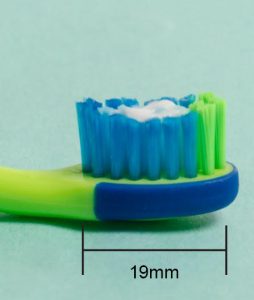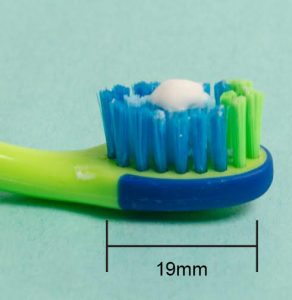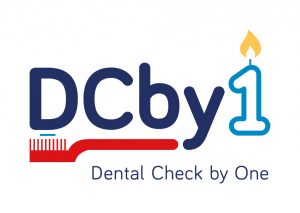Clean her teeth twice a day (she will need help until she is at least 7 years old). Choose water or milk as the main drinks – fruit juice (even diluted) can cause tooth decay and fizzy drinks are not appropriate for children. Don’t put anything other than milk or water in a bottle. If you want to give your child a sweet treat, give after a meal. It’s always best for sweet foods to be incorporated into a meal and for food between meals to be a savoury snack or a piece of fruit. Graduate your toddler onto a free flow cup if they haven’t learned to use one already.
If you give your child foods with sugar or acid in them, wait for half an hour before brushing. Sugar in the mouth turns to acid and temporarily weakens the enamel. By waiting before you brush, you allow the enamel to return to its normal state.
Use a small toddler’s toothbrush to clean each tooth in very small circles. Remember the last thing on your toddler’s teeth before they go to bed should be fluoride toothpaste.
Change your toddler’s toothbrush when the bristles start to look messy and curve outwards.
Saliva plays a key role in helping keep teeth protected from decay as it has a pH of 7.1. As saliva production is reduced at night-time it’s important to avoid anything other than water in the hour before bed.
Public Health England recommends fluoride toothpaste but make sure that your toddler doesn’t swallow it and only use a tiny smear.
Smear (Photo courtesy of Public Health England)

Blob (Photo courtesy of Public Health England)

If based in the UK you can register for free with an NHS dentist and book your toddler in for regular check-ups. The dentist will recommend the right appointment intervals. Dental care is free for children up to the age of 18 (19 if in full-time education). Every child should have fluoride varnish painted on their teeth twice a year from the age of 2 or 4 times a year if they are at high risk of dental decay.
If your toddler is resistant to you cleaning her teeth you could negotiate a situation where they are allowed to do the first clean (or the last clean) and you get to clean as well for around 2 minutes. Be really gentle as it can be very uncomfortable having someone else clean your teeth. You can use toothbrushes that light up for 2 minutes or an egg timer to help your toddler see how long to clean her teeth. Another technique is to tell your toddler a story, play a song or sing a song while you clean her teeth or (in the morning). It helps the time go by and side-tracks a reluctant tooth brusher. Try a fun app like BrushDJ to make teeth cleaning more fun – it’s NHS approved and free!

If you would like more information from the British Society of Paediatric Dentistry, please click here.
